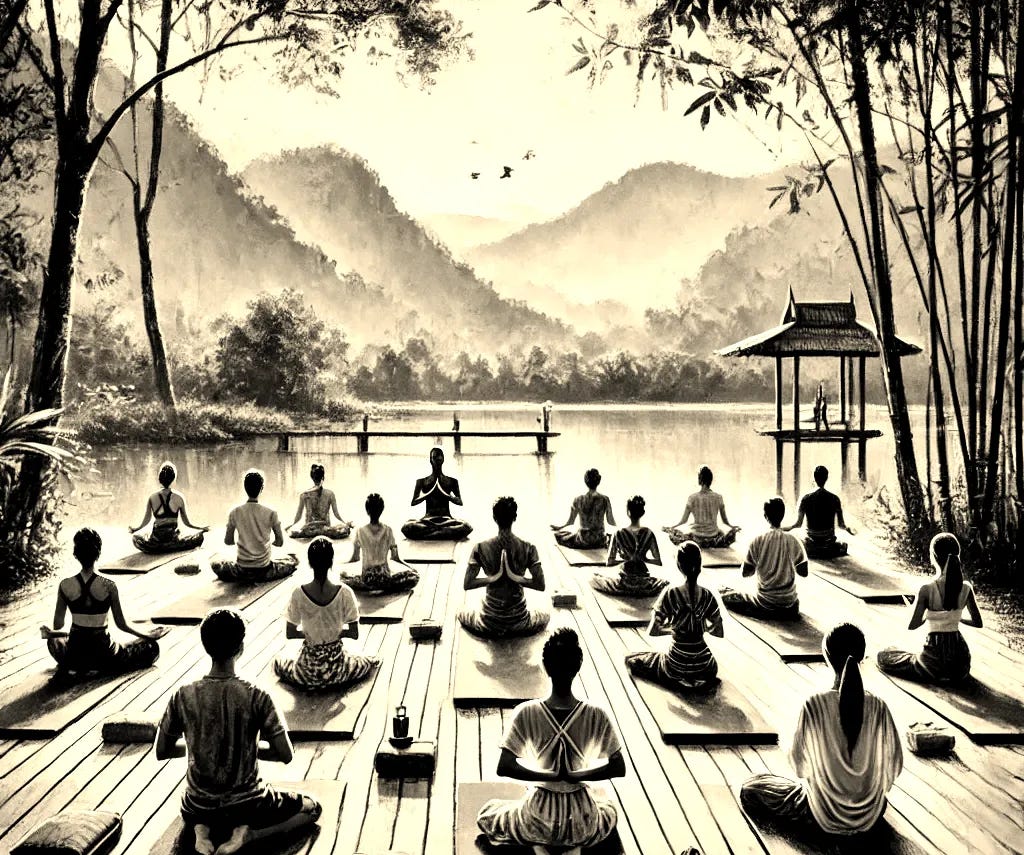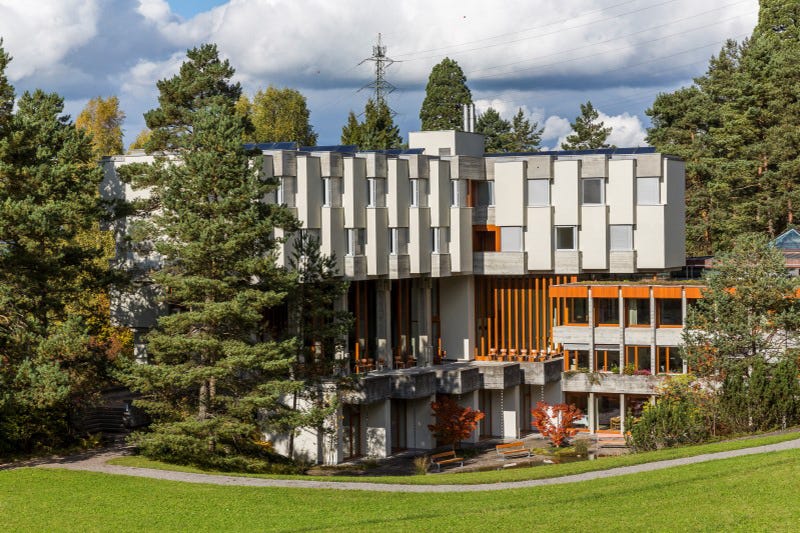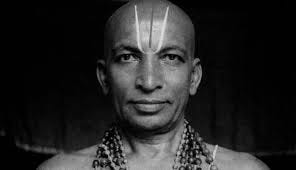I've been practicing Zen meditation and breathwork for years now, occasionally dabbling in "yoga" through the guidance of a well-known YouTuber. However, I never came across a yoga class in my area that truly caught my interest.
That changed when I first discovered the program at Lassalle-Haus, a beautiful educational center based in the Swiss mountains, not far from where I live. Founded by Swiss Jesuits, it is an open-minded space that offers a variety of spiritual practices, including zen meditation, yoga, Ignatian exercises, and Christian contemplation.
One particular offering stood out to me—a three-day yoga retreat based on the teachings of Krishnamacharya. Described as a physically demanding blend of yoga, breathwork (pranayama), and meditation, it immediately intrigued me.
And the best part? It was all happening in a beautiful place nearby. I was sold!
The venue - what a great place!
Leaving my home near Zurich, Switzerland, I embarked on a scenic drive through the beautiful countryside, arriving at Lassalle-Haus in just 30 minutes. This architectural gem, designed by renowned Swiss architect André Studer, embodies the principles of harmonic architecture, where every proportion corresponds to musical intervals, giving the structure its own unique resonance.
Operated by the Jesuits, Lassalle-Haus is named after Hugo Makabi Enomiya Lassalle, a visionary who pioneered the dialogue between Christianity and Buddhism, fostering spiritual exploration and contemplation.
I checked in and settled into my small yet cozy room—modest, with no television, but offering a stunning view of the landscape instead.
Later, I headed downstairs to join my yoga group for dinner, followed by an introductory session on yoga theory and the specific method our teacher would be guiding us through.
Our teacher was an older man of over 70 years (!)—lean and energetic—he was truly remarkable. Though he spoke sparingly, every word carried weight, delivered with a blend of joy and authority, making his class both inspiring and profound.
A physically and mentally demanding yoga style
Being Swiss, our teacher had studied yoga under one of the sons of Tirumalai Krishnamacharya—the renowned Indian yogi, Ayurvedic healer and scholar widely regarded as one of the most influential gurus who has greatly contributed to the revival of hatha yoga.
Krishnamacharya regarded yoga as India’s greatest gift to the world. His teachings embodied his belief that yoga is not only a spiritual practice but also a powerful tool for physical healing.
Our teacher explained that the word "yoga" means "union"—a concept that becomes deeply tangible through practice. As we move through the poses and breathwork, we begin to experience the profound realization that everything is interconnected.
The yoga style we studied is rooted in the "Eight Limbs" philosophy, guiding practitioners on a structured path toward self-realization through eight progressive stages:
Yama (Ethical Restraints)—Moral disciplines for interacting with the world:
Ahimsa (Non-violence)
Satya (Truthfulness)
Asteya (Non-stealing)
Brahmacharya (Moderation)
Aparigraha (Non-possessiveness)
Niyama (Personal Disciplines)—Self-purification and inner growth:
Shaucha (Cleanliness)
Santosha (Contentment)
Tapas (Discipline)
Svadhyaya (Self-study)
Ishvarapranidhana (Surrender to a higher power)
Asana (Postures)—Physical postures to prepare the body for meditation and spiritual growth.
Pranayama (Breath Control)—Regulation of breath to influence the mind and energy.
Pratyahara (Withdrawal of Senses)—Turning inward by detaching from external distractions.
Dharana (Concentration)—Focused attention on a single object or thought.
Dhyana (Meditation)—Deep contemplation leading to inner awareness.
Samadhi (Enlightenment)—A state of unity with the divine, pure bliss, and liberation.
The concept behind these eight stages resonates deeply with me, as it encompasses ethical behavior, inner growth, physical practice, breathwork and deep meditation. What more could one ask for? Well, there is one essential element missing—prayer!
For me, prayer is and always will be central to my life. It’s something I cherish, and I see no reason to give it up for my daily yoga practice. In fact, the two can coexist harmoniously, enriching each other rather than competing.
The practice
When I say the program was physically and mentally demanding, I truly mean it! We started at 7:00 AM the next morning and finished around 10:00 PM, with several longer breaks in between.
Our first lesson introduced us to Ujjayi breathing, a technique designed to calm the mind and enhance focus. The goal was to override distracting thoughts and enter a meditative state. We practiced this breathing method while moving through various poses, integrating it seamlessly into one flow.
Each round of yoga lasted about 30 minutes and followed a structured sequence of energetically interconnected steps:
Pranayama—A breathwork exercise to initiate the round
Asanas—A series of poses
Savasana—The corpse pose, performed between Asanas for relaxation
Pranayama—Concluding breathwork to complete the round
To close the day, we engaged in a 15-minute meditation session, allowing us to absorb the practice fully.
On the third day, the retreat concluded after lunch. As I checked out of the hotel, I felt a mix of emotions—happy, peaceful, and a little exhausted from all the new things I had learned. It was truly a transformative experience, and I highly recommend this type of retreat to anyone looking to kick-start or deepen their yoga practice.
A program to practice at home
As we left, our teacher handed us sheets outlining three different 30-minute practice rounds that we could—and should—incorporate into our daily routine. It was exactly what I had been hoping for:
The Challenge
As with anything truly valuable, a retreat like this will only bring lasting benefits if we commit to daily practice. I know it won’t be easy, but I’m highly motivated to stay consistent. Small mistakes will happen along the way, which is why regular refreshers and next-level retreats will be essential—and I genuinely look forward to them!
My takeaway - and a new daily routine
For me, yoga has become a valuable addition to my arsenal of techniques. Since the retreat, I have incorporated one of the practice "rounds" into my daily routine. I typically begin with prayer, move into yoga, and end with a deep meditation, drawing from my experience with Zen.
In total, this routine takes about 45 minutes each day, and it is absolutely worth it! I usually practice in the evening before bed, allowing myself one “cheat day” per week, when I skip my practice to enjoy a night out with my wife or friends. So far, this balance has worked really well for me.
I hope this inspires you to try something similar—I highly recommend it!
Want to engage?
Please subscribe and join my community, if you would like to engage in deeper discussions about this or any topic related to healing and awakening. My paid subscribers have access to personal coaching via Chat, and Gold Members get one hour of personal coaching via Teams/Zoom per year on top.
I also offer personalized coaching sessions on spiritual topics and powerful techniques that have helped me and many others before—let them be a resource for you as well on your path of healing and awakening. Just reach out!








